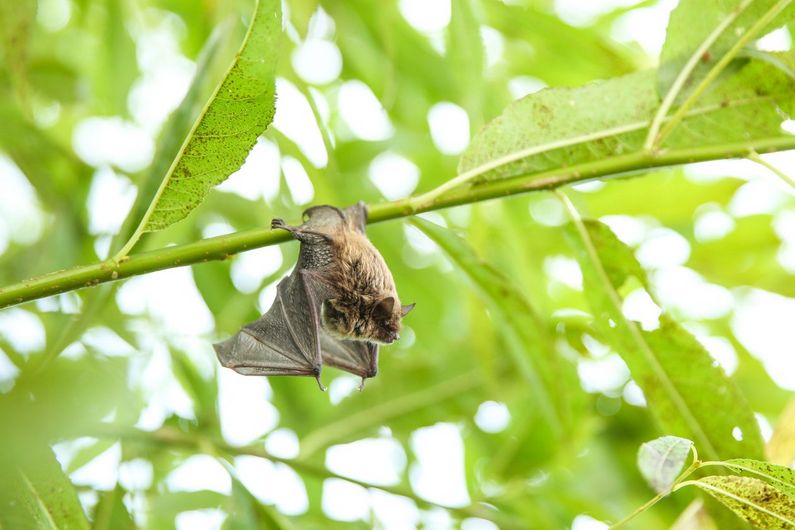Unraveling the complexity of betacoronaviruses in bats
- UdeMNouvelles
01/16/2024
A comprehensive study by scientists at UdeM maps the evolutionary dynamics and risks of viral emergence of diseases that could someday pose a threat to humans.
With pandemics increasingly a global concern, an international study led by scientists at Université de Montréal offers new insights into the intricate evolutionary dynamics of betacoronaviruses in bats, providing a deeper understanding of the risks posed by these pathogens.
In their research published in December, in Virus Evolution, a team led by biology professor Timothée Poisot and his doctoral student Norma Forero-Muñoz examine the global distribution of the betacoronaviruses, revealing a pattern far more complex than was previously understood.
Together with scientists in the U.S. and New Zealand, they developed a detailed framework that not only identifies geographical areas where these viruses and their hosts evolve differently, but also highlights specific regions where the conditions are met for future emergence events in densely populated areas.
Their findings underscore the significant diversity in the viruses' distribution across the globe, with certain areas, particularly Southeast Asia, sub-Saharan Africa and the Middle East, emerging as hotspots of viral diversification.
Understanding regional differences
Different regions harbor groups of viruses that evolve differently with their hosts, a fact that challenges the one-size-fits-all approach of earlier models, the scientists say. For instance, they identify the Neotropics of the Americas as a potentially unique pool for merbecoviruses, indicating that the evolutionary paths and potential risks of viruses can vary significantly from one region to another.
The research delves into the coevolutionary dynamics between some of the world's 1,400 species of bats and betacoronaviruses, offering insights into how these viruses and their hosts jointly evolve over time, and pointing to the mechanisms that could lead to the emergence of new, potentially zoonotic viruses.
The intricate relationship between host species and viruses underscores the complexity of predicting which viruses might pose a future threat to humans akin to outbreaks of SARS, MERS and COVID-19, the scientists say, as the next threat may likely be a virus that has not emerged yet.
"The great novelty of our work is to clarify the role of evolutionary and ecological processes in the risk of emergence of new betacoronaviruses from bat populations," said Forero-Muñoz, who is doing her Ph.D. in machine learning and data synthesis to predict viral spillover events.
"In the past, these processes were thought to make risk prediction very difficult," she said. "But by working from co-evolutionary principles, we've been able to identify areas in which all the right conditions come together for a rapid diversification of potential new viruses."
Addressing some limitations
She and her co-authors are candid about the study's limitations, particularly regarding the potential biases caused by uneven sampling and surveillance across different regions. This unevenness in data might lead to certain areas being underrepresented in the study, such as India and West Africa.
But they remain hopeful their work can influence public-health policies.
"By providing a more nuanced understanding of where and how bat betacoronaviruses evolve, the research helps us identify potential hotspots for the emergence of new zoonotic diseases," said Poisot, an associate professor of computational ecology.
"And that's vital for guiding surveillance and prevention efforts, especially in high-risk regions where these new viruses will immediately come into contact with human populations."
About this study
"The coevolutionary mosaic of bat betacoronavirus emergence risk" by Timothée Poisot, Norma Forero-Muñoz et al, was published Dec. 20, 2023, in Virus Evolution. Additional co-authors contributed from the following institutions: in the U.S, Washington State University, Georgetown University, and University of Oklahoma; and in New Zealand, Massey University. Funding was provided by IVADO and the Viral Emergence Research Initiative.














